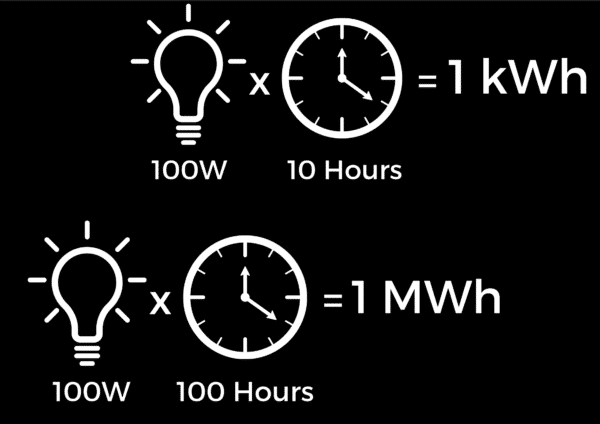You’re in the process of purchasing a solar system. You’ve researched, asked questions, studied articles on the internet, and tried to learn everything there is to know about solar panels and batteries. But the upfront cost is significant. No one prepared you for that. Even with financing, the upfront expense is too much for some shoppers.
But wait… didn’t you read about the government offering a rebate of some sort for installing a solar system? You definitely saw something about that.
It exists. But it isn’t a “rebate” (even though it totally works like one).
That might sound confusing; a rebate that isn’t a rebate. We need to clear that up for you. In Australia, there is no rebate.
What is commonly confused for a solar rebate is the federal government’s Small-scale Renewable Energy Scheme (SRES) for incentivising the purchase and installation of new solar systems. It’s a federal program for knocking down the upfront costs of a new solar system.
Because the money you get back doesn’t come from the federal government, it isn’t really a rebate. In fact, the only state in Australia to offer a state-level rebate is Victoria (where the residents need all the financial help they can get to pay for truly sub-par coffee).
At Penrith Solar Centre, we understand that this, like many things in the solar industry, can be a bit confusing at first glance. Fortunately, the SRES program is all handled by your certified solar installer – us or someone like us.
While you won’t be doing any of the paperwork to get that money back on your solar system (although, you could if you wanted to), it’s good to know what that process is and what it looks like.
In this article, you will learn:
- What Are Small-scale Technology Certificates (STCs)?
- Why Do We Use the STC System?
- How Is Your Rebate Calculated?
Knowing more about government incentives will allow you to ask more questions before you invest in a solar system. The better your knowledge, the more comfortable you’ll be with the company you choose – even if it isn’t us.
We want you to feel comfortable and confident in your solar choices. So without further ado, here’s a detailed look at the solar rebate that isn’t a rebate (even though it totally is).
What Are Small-scale Technology Certificates?
As we mentioned above, the Australian federal government solar power rebate is a program called the Small-scale Renewable Energy Scheme (SRES). Households are incentivised financially to install rooftop solar systems. The rooftop solar systems are evaluated, and virtual units of measurement called Small-scale Technology Certificates (or STCs for short), are issued to homeowners based on a number of factors (we’ll get into those shortly).
STCs are virtual certificates that evaluate the predicted amount of energy a newly installed solar system will produce. They’re issued at the time you purchase a new solar system before it’s installed.

STCs are calculated based on the size of the solar system, your location, and the year it was installed. It can be quite complex, and the program is in the process of phasing out until 2030 when it will be eliminated. This time limit is meant to encourage Australians to adopt solar power for their energy consumption needs sooner rather than later.
One STC is issued per 1 megawatt hour (MWh) of renewable energy generated by your new solar system.
- A megawatt hour is equal to 1,000 kilowatt hours (kWh).
- A kilowatt hour is equal to 1,000 watts (W).
- A 100 watt light bulb running for ten hours would use one kilowatt hour.
- If that same 100 W light bulb ran for 100 hours, it would use a megawatt hour.
Calculating the megawatt hours for a solar system considers the following:

- Size of the solar system. The larger the system, the more megawatts it will produce.
- Location of the solar system. For the purpose of this article, we’re only going to address STCs in the Sydney metro area here in New South Wales. But in Australia, there are four different zones established by the SRES to determine the STCs you’ll receive. The sunnier it is, the more STCs your system will receive.
- Year of installation. The Australian government is phasing out the SRES. Every year, the value of an STC goes down by 1/15 every year until the end of 2030 when it will reach zero. So the sooner you install your solar system, the more STCs you’ll receive.
The dollar value of individual STCs is constantly in flux due to solar market conditions. If the market for solar systems suddenly spikes, the value of an STC will reduce.
The overall value of an individual STC is between $0 – 40 each. The higher the price each STC is, the greater your “rebate” will be.

Unfortunately, there is no way to predict the cost of STCs, so be wary of anyone who claims to have that information. It’s impossible to guess when the value of the STC will be highest so don’t wait for the highest dollar value to install solar on your home.
Why Do We Use the STC System?
The STC system is a pretty sneaky way for the government to compel big bad polluting corporations to pay you for installing solar panels. The government doesn’t pay you the cash, the corporations do. Here’s how it works:
- The Australian federal government creates these virtual documents called Renewable Energy Certificates (RECs for short).
- The government then goes to the big bad polluting corporations and says, “You can either build up some renewable energy infrastructure like solar systems or you can invest in other people building up some renewable energy infrastructure like solar systems.” The big bad polluting corporations see that it’s cheaper to invest in other people’s solar systems, so that’s what they do.
- The government then issues RECs for your solar system based on what we mentioned above: size, location, and year of installation. Because you’re installing a residential solar system, the RECs are called Small-scale Technology Certificates (STCs).
- Penrith Solar Centre (or any other solar system installer) then sells the government issued STCs to the big bad polluting corporations. The sale of those STCs offsets the upfront cost of your solar system.
A lot of pricing for solar systems includes the STC incentive already, but that’s not always the case. You’ll want to be sure to ask if the price of the solar system includes it or not.
The STC system is a great way to stick it to the big polluters financially to help people like you get a leg up on helping the planet by reducing your carbon footprint and reducing your electricity bills.
How Is Your Rebate Calculated?
The math around calculating the rebate using STCs is complicated and the figures that are used to calculate them are constantly in flux (because it’s based on solar market conditions, remember?).
The fastest way to calculate your STCs is by using this handy dandy STC calculator the Australian government has online.
We wouldn’t be doing our job as educators if we didn’t break the calculations down for you.
The amount of money you’ll get knocked off the price of your solar system is based on a few things:
- What zone do you live in? There are four in Australia, and then they’re further subdivided by zip code.
- What is the dollar value of your STC? This fluctuates based on the market value of solar in Australia.
- How much power will your solar system produce? The power output of your solar system is measured in kilowatts. Compounded over time, those kilowatts turn into megawatts.
- What is the deeming period? New term, right? Don’t worry, we’ve already discussed it, but the government calculator uses this phrase to describe it so we’re going to explain it to you. The deeming period is the years between now and 2030 when the value of STCs is slowly decreasing. Because the year 2030 still counts for the program, you’re actually doing the math to 2031 to get it to zero. The deeming period is from this moment in time to the moment in 2031 when STCs no longer hold any value.

Zoning: Australia is divided into four zones based on how much solar radiation the region receives. Townsville gets more solar radiation than Tasmania. Each zone is assigned a numerical value rating. Here are the breakdowns for each zone:
Zone 1 – 1.622
Zone 2 – 1.536
Zone 3 – 1.382
Zone 4 – 1.185
How Many STCs: As an example, let’s say you want solar that you want installed on October 31, 2023 (Happy Halloween!). It’s a 10 kW system. Because it’s eight years to 2031 when STCs have no value, your deeming period will be 8 years. Finally, you’ll need your postcode (let’s do Penrith).
The equation is: solar system size in kilowatts x postcode zone rating x deeming period = number of STCs (rounded down)
So then: 10 kW x 1.382 x 8 = 110 STCs
You would receive 110 STCs.
Dollar Value of Your STCs: You would then multiply the number of STCs by the dollar value of an individual STC. At this time of writing, the dollar value of an STC is $38.50. Please note that this will change based on the solar market.
So the equation is: 110 STCs x $38.50 = $4,235.00
$4,235.00 is the total amount for your solar rebate that isn’t a rebate (even though it totally is).
Okay, We’ll Call It a Rebate: Wrapping Things Up
Remember ten minutes ago when you were overwhelmed about getting information about the Australian federal solar rebate? That was wild. We hope you can now look back fondly on that time and laugh.
You now have a comprehensive understanding of what is factored in to calculate your solar rebate. You also know how to work with your solar installer, whoever it happens to be, and what questions to ask them.

At Penrith Solar Centre, we have sold thousands of STCs on behalf of our customers, helping them maximise their savings while finding the best solar system for their unique needs. If you’re interested in learning more about how much that solar system will cost and how many STCs you’re eligible for, contact us to speak with a solar system specialist.










